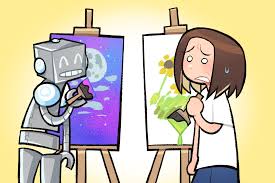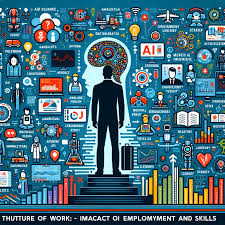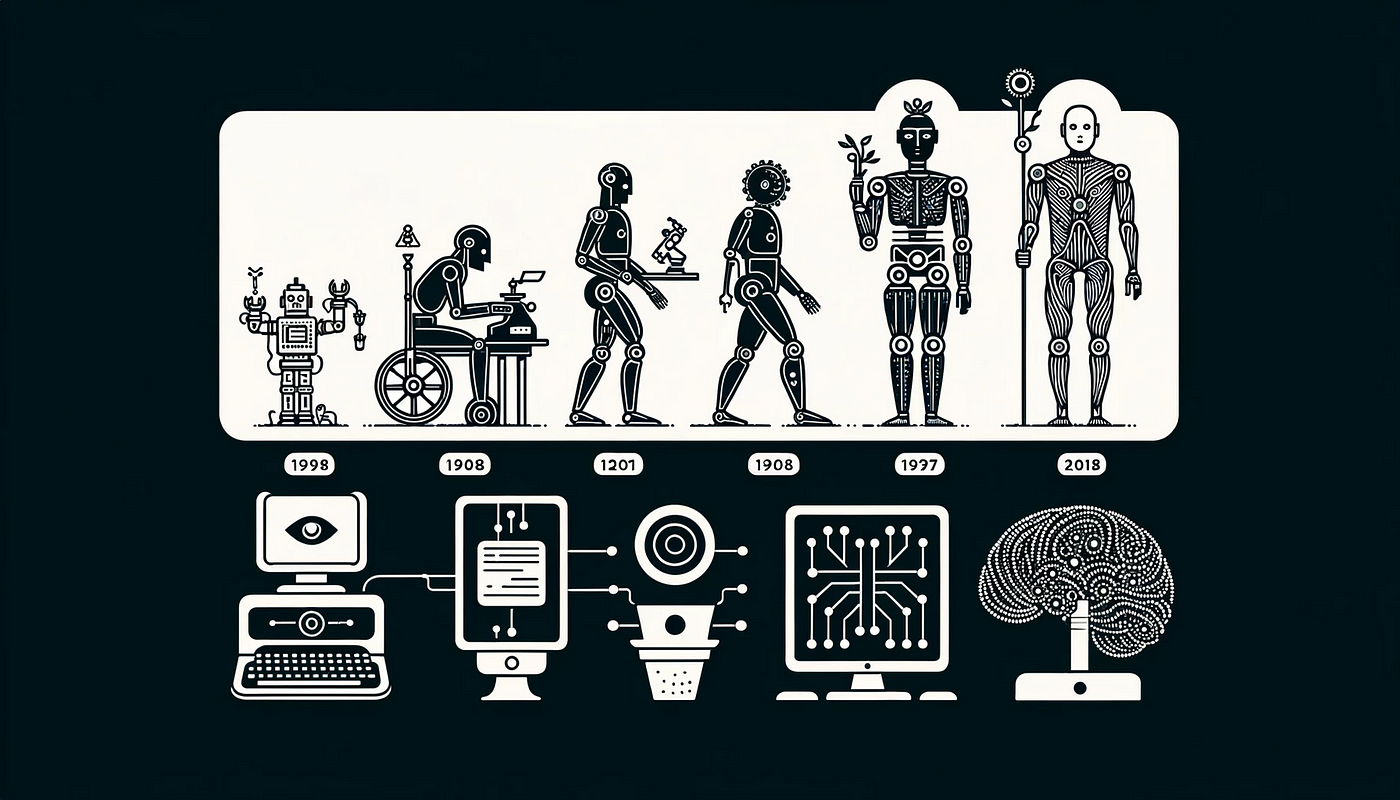Introduction
AI and small-scale creative industries represent a powerful intersection where technology enhances creativity. AI is one of the most important new technologies of the present time, actively influencing various spheres of our lives.
Thus AI-driven creativity is generating new opportunities and novelties for small, frontal, creative companies. This article focuses on AI applications in creative fields, the problems that AI can encounter in creative areas, and how AI and small-scale creative industries can make creators more creative and change creative practices.
The Role of AI in Creative Industries
Technology, especially artificial intelligence, has indeed been adopted by various firms within AI and small-scale creative industries. AI’s ability to analyze large volumes of data and provide insights allows an artist, designer, or anyone in the creative field to work more efficiently, reduce time spent on repetitive or time-consuming tasks, and focus on creativity. Due to AI technologies, creators within the AI and small-scale creative industries can innovate more easily, express their ideas, and collaborate more effectively. Learn more about the history of AI.
Opportunities and Innovations for Small Creative Businesses
It is worthy of note that AI and micro-scale creativity have always faced challenges like access to markets, capital, and equipment. However, AI presents generous opportunities for these enterprises by enabling them to increase coverage, customize goods and services, and manage promotion effectiveness. AI-powered marketplaces and platforms grant AI and small-scale creative industries access to the international market, broadening their reach.
Challenges Faced by AI in Creative Sectors

AI has massive opportunities regardless of the creative industry, but it also faces some challenges. One significant issue is the conceptual anxiety of creativity being alienated by AI. In AI and small-scale creative industries, this anxiety is particularly pronounced as creators fear losing their unique creative processes to machines. Nevertheless, AI should be seen as a tool that enhances the human creative process within AI and small-scale creative industries rather than replacing it. Another challenge is AI’s lack of creative intuition or emotional depth, which is essential in the creative sector. Explore the future of AI in our daily lives.
AI Driven Creativity: Enhancing Creative Processes
AI can help in creative work by giving ideas, creating one, and helping in the designing and prototyping of the item. Machine learning can process and interpret patterns, which assists artists and designers in producing materials that meet society’s current and future needs. In other words, AI relieves designers of repetitive work so that their creativity can be employed at a higher level.
Trends in Small Scale Creative Industries
The following is the impact of AI on small-scale creative industries: The concepts of personalization are considered essential to a plurality of fields; AI techniques help in providing personalized user experiences or product suggestions. Social networking sites are also coming to light by bringing together interdisciplinary creative collaborations and general expert communication. AI is also being combined with Virtual Reality (VR) and Augmented Reality (AR), making the interactive experiences more realistic.
Impact of AI on Independent Artists

Artists, especially those in the industry, have benefited from AI technologies. New technologies allow them to avoid the problems of the traditional gatekeepers and influence more people. Incorporating AI analysis of consumer behavior will thus be allowed into the art world, helping artists make better decisions when making art. In addition to these benefits, AI also assists independent artists in selling their artworks on the market and licensing their art.
AI Technology for Niche Creative Markets
AI has brought out fine-niche creative markets, which were earlier restricted due to resources and reach. AI algorithms are able to locate gaps in the market and focus on certain specific demographics for creatives to make specific and specific products. This has benefitted artists and designers who practice in specialized areas because it has made it easy for them to market their services and products thereby making more sales and expanding their market or business.
AI Tools for Small Creative Enterprises
AI tools can help small creative businesses manage their businesses in a smart way. AI-integrated project management tools can also assist in automatic scheduling, task assignment, and resource deployment. AI-based market intelligence tools can be of great help to small business people in decision-making based on consumer patterns and trends prevailing in the market.
Innovation in Creative Industries with AI
Applications of AI in Art and Design
AI is easing innovation across creative practices. This is because time is best utilized by the creators in the most efficient ways possible through the automation of repetitive tasks. Due to the help of AI, people and machines can go through a huge amount of data, learn about new tendencies, and come up with new ideas. It challenges creative professionals in order for them to come up with ideas that are beyond the limits when it comes to certain fields.
Micro-Scale Creativity and AI

AI is revolutionizing micro-level creativity by providing the privilege of specialized services and customized solutions. Through AI, consumers can be analyzed and based on their data and preferences, unique artistic pieces can be designed. This creates customer interaction and improves their satisfaction, and at the same time offers more sales opportunities to artists.
The Future Outlook for AI in Creative Professions

The future of AI application in creative fields seems to be more or less bright. More AI products will come into the market and even increase in sophistication to be more friendly for the user. Intelligent collaborators in the shape of AI assistants and virtual counterparts will be adopted to help creators receive better creative tools and working environments. But the part of the human factor such as imagination and instinct in the process of creativity will always be significant.
AI Solutions for Independent Creatives
There are beginnings of solutions that are specifically tailored for the independent creative. Indeed, the current multitude of opportunities includes everything from AI-powered content recommendation services to analytical tools for independent artists. These solutions lessen the hurdles to access and make opportunities and resources available to independent contributors, which were otherwise a prerogative of large establishments.
Disruptions Caused by AI in Creative Industries
AI has on various occasions been integrated into the creative industries, causing disruptions. Many practices and conventions of AI and small-scale creative industries in the labor market are changing due to widespread artificial intelligence. But conversely, such interruption also opens up new possibilities for the creatives to steer towards more strategic and conceptual types of tasks and ideas. The interaction between humans and artificial intelligence is vital to maintaining and even advancing creativity.
Enhancing Creativity with AI: Methods and Techniques
Thus, there are methods and techniques that are created to enhance creativity with the use of AI. Self-organizing neural networks are employed for generating new and realistic pictures of art. Text synthesis is another way through which AI is built; through the use of NLP. This approach [reinforcement learning] is allowing AI to learn and reproduce creative decision-making.
Conclusion
AI and small creative industries are impacted by technological advancements, both positively and negatively. AI serves as a tool that improves creative processes, expands opportunities, and provides valuable information to end users. It supports the growth of independent artists and small inventive companies in a competitive environment. Rather than replacing human creativity, AI should be seen as a versatile tool that enhances and amplifies it. For a deeper understanding of AI’s impact, see this related article.
FAQs
1. How does AI impact large industries?
AI is transforming large industries by streamlining repetitive tasks, offering insights through data analysis and empowering creators to innovate more efficiently. It also creates opportunities by broadening market reach and providing tools that boost creativity.
2. What advantages does AI bring to artists?
Independent artists benefit from AI by accessing markets, enhancing decision making through AI driven analysis of consumer behavior and automating tasks such as marketing and licensing their artwork.
3. What difficulties does AI encounter in these sectors?
AI encounters challenges like concerns about machines overshadowing creativity and a perceived lack of intuition or emotional depth. Nonetheless it is generally regarded as a tool that amplifies creativity rather than supplanting it.
4. How does AI foster innovation in the realm of industries?
AI fosters innovation by sifting through large amounts of data pinpointing trends and sparking ideas. It aids creators in pushing boundaries and conceiving ideas that break molds.
5. What role does AI play in markets?
AI plays a role, in supporting niche industries by pinpointing specific demographic needs and empowering creators to customize their offerings for those audiences facilitating better connections and interactions with specialized groups.
6. Is it possible for AI to entirely supplant creativity?
No AI can serve as a substitute for creativity. Although it assists and complements the journey human elements such as imagination and intuition are indispensable in crafting distinctive and emotionally impactful pieces.
8. What are the future prospects of AI in creative professions?
The future of AI in creative professions is promising, with more sophisticated tools expected to emerge. AI will continue to support creative processes, offering even better collaboration opportunities and creative tools while preserving the essential human element.
7. How can small creative businesses use AI tools?
Small creative businesses can use AI tools for project management, market intelligence, and automating business processes. These tools help in making informed decisions based on market trends and consumer behavior.
9. How can I learn more about the history and impact of AI in the creative industries?
You can explore more about the history and impact of AI in creative industries by reading this article on the history of AI or this overview of AI’s future impact.




Great work absullah
comment to neyat se kr ta ya absullah kya ha